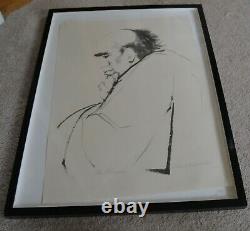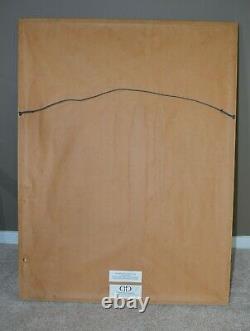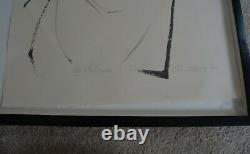
- Home
- Artist
- Andy Warhol (98)
- Banksy (341)
- Charley Harper (15)
- Cocomilla (27)
- Damien Hirst (84)
- Dface (22)
- Invader (30)
- Kaws (52)
- Keith Haring (30)
- Laurent Durieux (24)
- Martin Whatson (30)
- Modern & Luxury (22)
- Pablo Picasso (63)
- Roy Lichtenstein (19)
- Shepard Fairey (92)
- Space Invader (22)
- Takashi Murakami (48)
- Thomas Kinkade (25)
- Tyler Stout (16)
- Unknown (146)
- Other (3748)
- Brand
- Arttor (5)
- Canvas (47)
- Canvas Geeks (11)
- Canvasunique (7)
- Coach (28)
- Coloray (21)
- Cox & Cox (3)
- Gucci (3)
- Himitsuhana (3)
- Ink North (10)
- Marc Jacobs (9)
- Michael Kors (2)
- Modern & Luxury (9)
- My Swanky Home (3)
- Photos On Canvas (2)
- Picutre Prints (2)
- Pop Art (7)
- Red Bus Prints® (18)
- Tb Creations (3)
- Tulup (52)
- Other (4709)
- Item Length
- Item Width
- Material
- Acrylglass (14)
- Acrylic (10)
- Canvas (322)
- Canvas Giclee Print (62)
- Canvas, Paper (17)
- Color Plate (16)
- Etching (8)
- Giclee & Iris (15)
- Glass (51)
- Gloss Paper (73)
- Leather (14)
- Lithograph (29)
- Matte Paper (21)
- Offset Lithograph (46)
- Paper (235)
- Paper Or Canvas (17)
- Papier (39)
- Pine (10)
- Print (30)
- Saffiano Leather (8)
- Other (3917)
- Size
- 152x102cm (60x40in) (15)
- 24 X 16 Inch (157)
- 36 X 24 Inch (12)
- 36x54 Inch Canf (9)
- 48 X 72 Inch Canf (20)
- 50cm X 70cm (51)
- 50x70cm (9)
- 54\ (10)
- 70x50cm (9)
- Extra Large (31)
- Large (122)
- Large (up To 60in.) (115)
- Massive 40\ (15)
- Medium (137)
- Medium (up To 36in.) (670)
- Small (36)
- Small (up To 12in.) (89)
- Small, Medium, Large (8)
- Various (60)
- Various Sizes (19)
- Other (3360)
Reba Dickerson Hill African American Artist Lithograph The Philosopher Rare






LITHOGRAPH NEEDS TO BE REMOUNTED IN FRAME. FRAME MEASURES APPROXIMATELY 23 X 30 1/2 INCHES WITH LITHOGRAPH MEASURING APPROXIMATELY 19X26 INCHES. GENERAL BOOKS AND GROUP EXHIBITIONS. Seven Afro-American artists of the Delaware Valley.
Includes: Reba Dickerson Hill, Paul Keene, Humbert Howard, Charles Searles, Louis B. Sloan, Andrew Turner, Ellen Powell Tiberino. Unbroken Circle: Exhibition of African American Artists of the 1930's and 1940's. Checklist of work by 56 artists (including 10 women artists). Corinne Jennings; text by David C.
Driskell, and beautiful memoir by curator / artist Vincent D. Well-chosen examples of each artist's work.Includes: Charles Alston, Richmond Barthé, Romare Bearden, John Biggers, Robert Blackburn, William Braxton, Selma Burke, Samuel J. Brown, Elizabeth Catlett, Claude Clark, Eldzier Cortor, Ernest Crichlow, Allan Rohan Crite, Beauford Delaney, Joseph Delaney, Richard Dempsey, Reba Dickerson-Hill, Aaron Douglas, Elton Fax, Charlotte White Franklin, Meta Fuller, Herbert Gentry, Rex Goreleigh, Palmer Hayden, Humbert L. Howard, May Howard Jackson, Wilmer A.
Johnson, Lois Mailou Jones, Paul Keene, Jacob Lawrence, Hughie Lee-Smith, James Lewis, Norman Lewis, Joan Maynard, Archibald Motley, Delilah Pierce, Robert Pious, Georgette Powell, Daniel Pressley, Donald Reid, John Rhoden, Charles Sebree, Thomas Sills, Alma Thomas, Dox Thrash, Masood A. Warren, James Wells, Charles White, Walter Williams, Ed Wilson, Ellis Wilson, John Wilson, Hale Woodruff. Text includes discussion of some additional artists: Robert Duncanson, Edmonia Lewis, Henry Tanner, Valerie Maynard, James Porter. Klein Art Gallery, University City Science Center. Two Women: Reba Dickerson Hill and Ellen Powell Tiberino.
Tiberino's work consisted of graphite and pastel images. Sumi-e works in this show range from the spare traditional black and white ink study The Philosopher to full color works blending Japanese ink technique with Western watercolor. School District and Museum of the Philadelphia Civic Center. List of over 100 artists. Important exhibition juried by Al Hollingsworth, Reginald Gammon and Louis Sloan. Craig mentions many artists not in the exhibition. Exhibition includes: Emma Amos, Benny Andrews, Ralph Arnold, James Ayers, Frederick Bacon, Joseph C. Bailey, Janette Banks, Edward M. Bannister, Richmond Barthé, Harry W. Bayton, Romare Bearden, Betty Blayton, James Brantley, Arthur Britt, Charles E.Brown, Reginald Bryant, Barbara Bullock, Selma Burke, Calvin Burnett, Margaret Burroughs, Frederick Campbell, Barbara Chase-Riboud, LeRoy Clarke, Louise Clement, Eldzier Cortor, R. Craig, Nicholas Davis, William Day, Avel DeKnight, J. Brooks Dendy, James Denmark, Reba Dickerson a. Reba Dickerson-Hill, Thomas Dickerson Jr.
Robert Duncanson, Walter Edmonds, Cliff Eubanks Jr. Charlotte White Franklin, Allan Freelon, Reginald Gammon, Charles W. Gilliam, Marvin Hardin, Bernard Harmon, Palmer Hayden, Barkley Hendricks, Alvin Hollingsworth, Humbert Howard, Alfonzo Hudson, Leroy Johnson, Malvin Gray Johnson, Sargent Johnson, William H. Johnson, Joshua Johnson, Lois M.Jones, Cliff Joseph, Paul Keene, Columbus P. Knox, Jacob Lawrence, Hughie Lee-Smith, Edmonia Lewis, James Lewis, Norman Lewis, Tom Lloyd, Geraldine McCullough, Charles McGee, Thomas A. McKinney, Lloyd McNeill, Juanita Miller, Robert C. Moore, Jimmie Mosely, Horace Pippin, James Porter, Simon D.
Prioleau, Nancy Elizabeth Prophet, Ed J. Purnell, Percy Ricks, Anita B.
Riley, Faith Ringgold, Raymond Saunders, Charles Searles, Michael Shelton, Thomas Sills, John Simpson, Merton Simpson, Louis Sloan, Carl R. Smith, Dolphus Smith, Philippe Smith, Frank Stephens, Mary L.Stuckey, Eldridge Suggs III, Henry Ossawa Tanner, Mary Alice Taylor, Russ Thompson, Dox Thrash, Ellen Powell Tiberino, Lloyd Toone, John Wade, Cranston Oliver Walker, Laura Wheeler Waring, Howard Watson, John Brantley Wilder, Earl A. Wilkie, Ed Wilson, Hale Woodruff, Charles E. Smith-Mason Gallery of Art, in cooperation with the National Bank of Washington.
National Exhibition of Black Artists. Artis, Charles Axt, Francis Baird, Bill Banks, Ellen Banks, Mohammed S. Britt, Benjamin Britt, Malcolm Brown, Calvin Burnett, Elwyn Bush, Yvonne Carter, Dana Chandler, Wallace X. Conway, Art Coppedge, Eldzier Cortor, G.
Coxe, Randall Craig, Rachel Davis, Robert Freeman, Reginald Gammon, Jim Gary, Leroy Gaskin, Patricia Giles, Rex Goreleigh, Eugene Grigsby, Phillip Hampton, Reba D. Hollingsworth, Humbert Howard, Nathaniel Hunter, Alice E. Ivory, Catherine James, Venda Jennings, Lester L.
Johnson, Ben Jones, Lois Mailou Jones, Jack Jordan, Charles E. Joyner, Harriet Kennedy, Raymond Lark, Yvonne Lawson, Juan Logan, Edward L. Marshall, Corinne Mitchell, Evelyn Mitchell, Hedrick E.
Morris, Keith Morrison, Jimmie Mosely, Barbara J. Porter, Georgette Powell, Roscoe C. Richmond, Percy Ricks, Gregory Ridley, Lucille Roberts, Donald J. Arthur Rose, Frank Sharp, Kenn Simpson, Michael Singletary, Vincent D.Smith, Zenobia Smith, Dale Spann, Edith G. Strickland, Bill Taylor, Elmer D. Taylor, Jean Taylor, Conrad Thompson, Leo Twiggs, Jean Valentine, Larry Walker, Rena Watson (as Renee), Evelyn Ware, James Lesesne Wells, Pheoris West, Garrett Whyte, Louis Williams, George L. 4to 31 x 12 cm. Reba Dickerson Hill, American artist.
Member Philadelphia Water Color Club, (life, board directors since 1992), Sumi-e Society of America. Hill, Reba Dickerson was born on February 17, 1918 in Philadelphia, Pennsylvania, United States. Daughter of Evan Thomas and Reba Henrietta (Tyree) Dickerson.
Bachelor of Science in Education, Cheyney (Pennsylvania) University, 1939. Postgraduate, Barnes Foundation, Merion, Pennsylvania, 1947. Postgraduate, University Exeter, England, 1987. Reba Dickerson Hill has been listed as a notable Artist by Marquis Who's Who. Married Harold Woodrow Hill, March 15, 1940. Children: Reba, Harold Junior, Allan. Furniture, Still Lifes and Domestic Objects by Artists. Borowsky Gallery Gershman Y 401 S. "Please do not sit on chairs, " warns a sign at the entrance to Living It Up!The living room-like gallery is especially suitable for this show of domestic artworks and still-lifes. If one foolishly sat on a portrait chair by Johanna Goodman, one would risk getting pinched: these chairs are already occupied. Two side chairs draped with sculptural clothing and suitably accessorized become F.
(with a toothy grin on his broad face), and his wife Eleanor, who wears a painted fur coat with a real fake fur collar. Her gloved hands rest in her lap.The tips of the front chair legs are painted to look like tiny shoes (Poetic license on Goodman's part - I've seen Eleanor's shoes and they are huge). Near the big marble fireplace, Jack and Jackie O sit side by side. Across from them is Marilyn, her gold dress blown up above her knees, reminiscent of the famous Seven Year Itch poster; however, the Marilyn chair is oddly headless.
Marilyn Keating's mostly wood sculpture has always been beautifully constructed. The work shown here seems a bit more muted in color than early pieces.
The most recent, Love Bite, is executed in dark monochrome green and black. The floor-mounted vase shape containing tall thistle-like plants constructed of wood is flanked by a pair of praying mantises in place of handles. Their elongated forms emphasize the verticality of the whole. The headlessness of one illustrates the title of the piece (maybe that's what happened to Goodman's Marilyn, though I thought it was the female who bit off the male's head). Keating is also showing Toxic TV: Just a Little Collateral Damage, a comment on the Gulf War in which blood red "sand" bearing tanks and dollars pours from a television set decorated with a yellow ribbon, and Punch Judy Theater, a stage containing a family of articulated puppets. This work continues Keating's long-term exploration of the theme of domestic abuse. In a lighter vein are ceramic objects by Ruth Borgenicht: industrial-size OFF/ON switches and Three Prong Outlets attached in appropriate places on the wall.There's also the extra-big timer And Time Stood Still, set at three minutes for eternity. Eschewing enlargement, Borgenicht's typewriter It Spoke to Me, with its smiling red mouth, and the Consumer toaster with white teeth gnashing in the toast slots, are faithful, if surreal, renditions of slightly old-fashioned machines. Harry Anderson is showing his lamps composed of cleverly selected and joined found objects of china, glass, metal and other materials (including a badger shaving brush). View Finder is an old View Master 3-D stereoscope containing a selection of pictures of Chicago (the stockyards are especially good). It's placed so that it appears to be binoculars offering a view out the window.
A Cowgirl lamp is constructed from slightly curved metal spronging through space and Agitator includes a part from an old washing machine. Three painters from Rodger LaPelle gallery have works in this show. Mason Rader is showing Exotic Vistas, which elegantly combines three elements in three distinct styles and palettes: a painting of furniture composed of cattle horns, an ice-cream-color scene of Japan, and monochrome green cut-out silhouettes of women balancing jugs on their heads. John Thornton is showing two bright-colored, hard-edge surreal still-lifes. These scenes initially appear playful, but shifts of scale and point of view become increasingly ominous.In one, nesting Russian dolls seem to be related to skulls of different sizes. Tinker Toys and bizarre wallpaper contribute to the nightmare effect. Illusionistic play may be the primary purpose of Fred Danziger's small, engaging constructed paintings. A shadowbox effect is generated by a real chain hanging on either side of the frame of a painting crossed by a painted chain and padlock.
In the cool distance beyond the chain we see a walled castle in Cahors, France. In the formally related Transcendent Passage, a shuttlecock is reproduced in two painted versions of decreasing size, one of which casts a painted shadow as believable as the real shadow of the real shuttlecock outside the frame. The third shuttlecock appears to fly into open sky. Patricia Brock Ingersoll is best known for paintings of rocks her solo show at Rosenfeld Gallery opens Feb. 4, though she painted a Tuscan Landscape for the Mural Program.She's showing a Tuscan Armoire (1993) with a Pompeii-influenced architectural perspective on the doors, an Italian landscape on the interior and small trees on the drawer fronts. A complementary folding screen also displays a Tuscan Landscape. Ingersoll is also showing a couple of traditional still lifes in pastel on black paper.
While Thornton and Danziger pictorially play with elements of domestic interiors, I'm not sure why traditional still lifes like Ingersoll's and John DeVlieger's were included in the otherwise surreal manipulations of objects which dominate the show; however, both Ingersoll's and DeVlieger's work is attractive. DeVlieger uses traditional elements suggestive of Flemish still-life: patterned carpeting, statuary fragments and, in one work, a brilliant parrot beside a Chinese vase. Two notable Philadelphia artists are being celebrated in a memorial exhibition at the Klein Gallery. Her paintings and drawings are generally centered on the human figure, though often in the context of nature. In Tiberino's work a meandering line like a knotted thread defines form as it twists and turns through the composition.
This is a small selection of work from a prolific artist, but it covers some of her major themes. The narrative quality of Worn Paths (1985) is typical. The scene of an old woman leaning on a stick as she walks a dark path through tangled jungle-like growth is memorable. In the Chagall-like pastel We Three (1990), a smiling family clusters under a copious red umbrella.
Perry's Garden flourishes, Eden-like, around two figures leaning in the shadow of a gnarled tree. All these vignettes invite the viewer to conjure stories. Graphite, a favorite medium for Tiberino, is often heavily worked in layers of dense shiny black, sometimes enhanced with a softer oily black, perhaps oil pastels or litho crayon. Thin Uncle Richard (1974) is dressed up but not ebullient. His grizzled beard is laid in with even squiggles, but his eyes and top hat are heavily shadowed in velvety blacker-than-black, rendered in Tiberino's recursive line.
Contemplative Queenie (1983) is seen through a window surrounded by carefully observed vegetation. A nude study from 1959 is perhaps the earliest work in the show. Though not attempting to be more than a study, it is beautifully drawn. A seductively posed self-portrait To Joe from 1967 reveals a profile echoed in the charming portrait of her daughter drawn some 19 years later.
Cherry Blossoms (1976), the only pure landscape in the show, is a tour de force of broken color and dramatic transitions - from the abstracted sunlit arches of barren branches, to the dense brilliant confetti of heavily blooming lower ones, to the hidden dark knotted trunk underneath. Human presence is implied by a nearby wall. Its creamy profile catches the light and seems to bend ever so slightly under the weight of the cascading flower-laden boughs. Her work has been exhibited internationally.Before the Rains (1991) is a colorful puzzle of a fractured rocky outcropping in blues and reds under a threatening sky. Brushy undergrowth in the foreground is highlighted in white.
In Before the Snows (1991) the simple blunt masses of mountains recede into the distance. Mysterious Mountain is executed in sequential washes, dark in the foreground and pastel in the misty distance where a pale sun burns above.
The Ninth Wave, a horizontal composition, is flecked with dots of white foam. Formally, it's related to a series of four small horizontal mountain and ocean views executed on sumi-e boards. Hill's earliest work in the show, a pen and ink portrait of a bearded man from 1961, is linked in some ways to a series of paintings on tiles which she completed toward the end of her life.
Exhibited here are portraits of the native peoples of Northern Africa, carefully recording details of regional hairstyle, jewelry and dress. This item is in the category "Art\Art Prints". The seller is "memorabilia111" and is located in this country: US. This item can be shipped to United States, Canada, United Kingdom, Denmark, Romania, Slovakia, Bulgaria, Czech Republic, Finland, Hungary, Latvia, Lithuania, Malta, Estonia, Australia, Greece, Portugal, Cyprus, Slovenia, Japan, Sweden, Korea, South, Indonesia, Taiwan, South Africa, Thailand, Belgium, France, Hong Kong, Ireland, Netherlands, Poland, Spain, Italy, Germany, Austria, Bahamas, Israel, Mexico, New Zealand, Singapore, Norway, Saudi Arabia, United Arab Emirates, Qatar, Kuwait, Bahrain, Croatia, Republic of, Malaysia, Chile, Colombia, Panama, Jamaica, Barbados, Bangladesh, Bermuda, Brunei Darussalam, Bolivia, Ecuador, Egypt, French Guiana, Guernsey, Gibraltar, Guadeloupe, Iceland, Jersey, Jordan, Cambodia, Cayman Islands, Liechtenstein, Sri Lanka, Luxembourg, Monaco, Macau, Martinique, Maldives, Nicaragua, Oman, Peru, Pakistan, Paraguay, Reunion, Vietnam, Uruguay.- Style: Americana
- Listed By: Artist
- Material: Lithograph
- Type: Print

